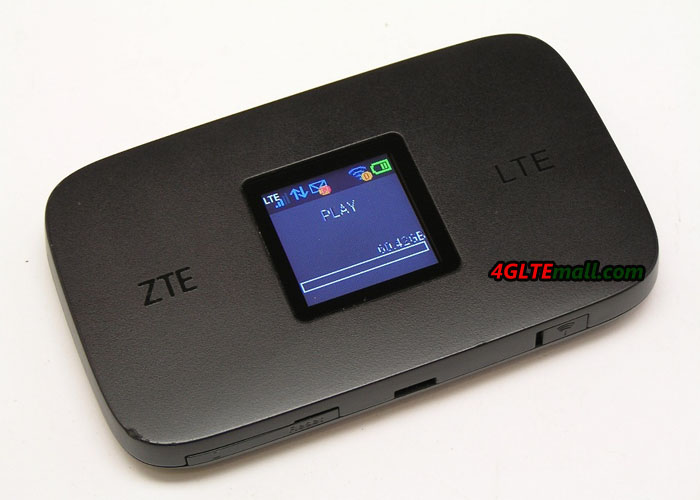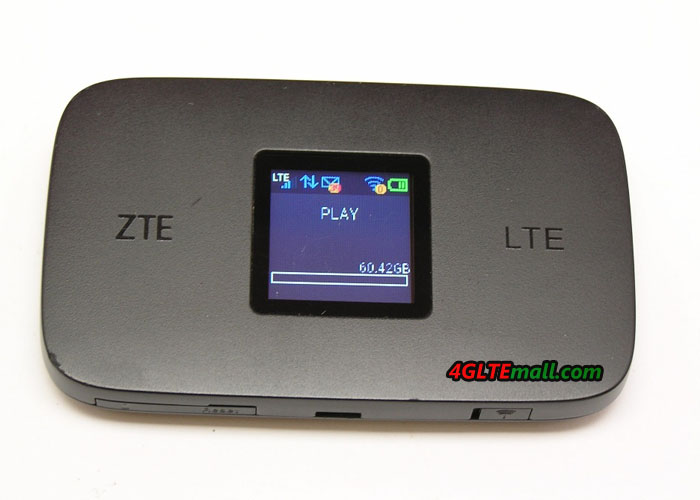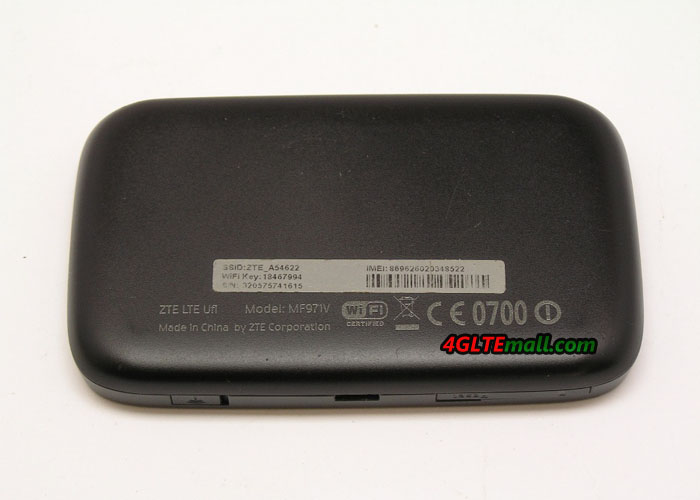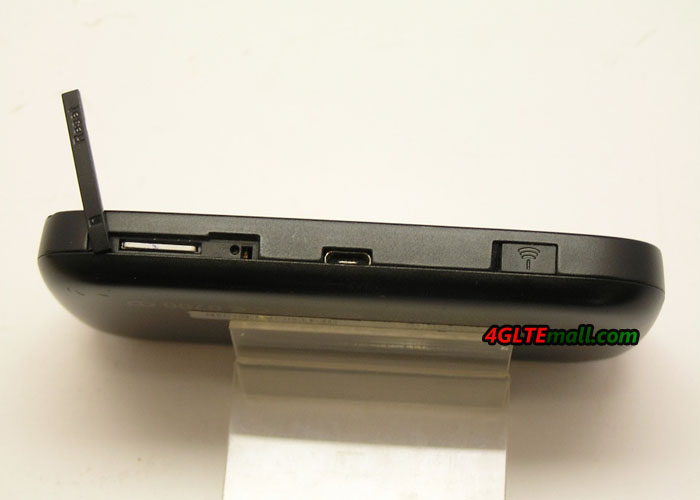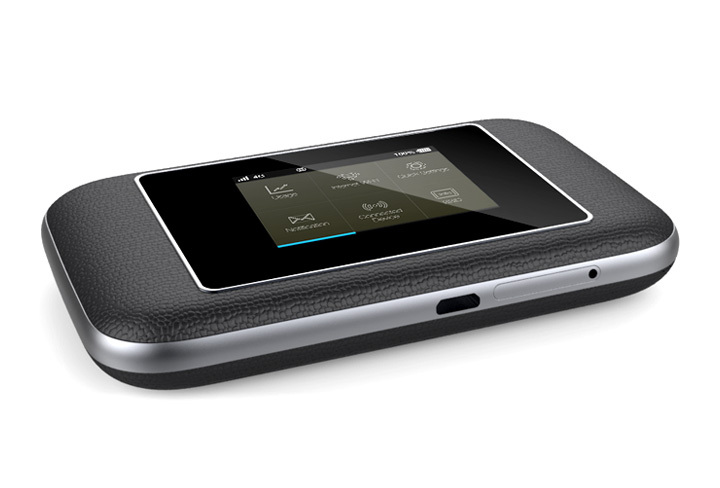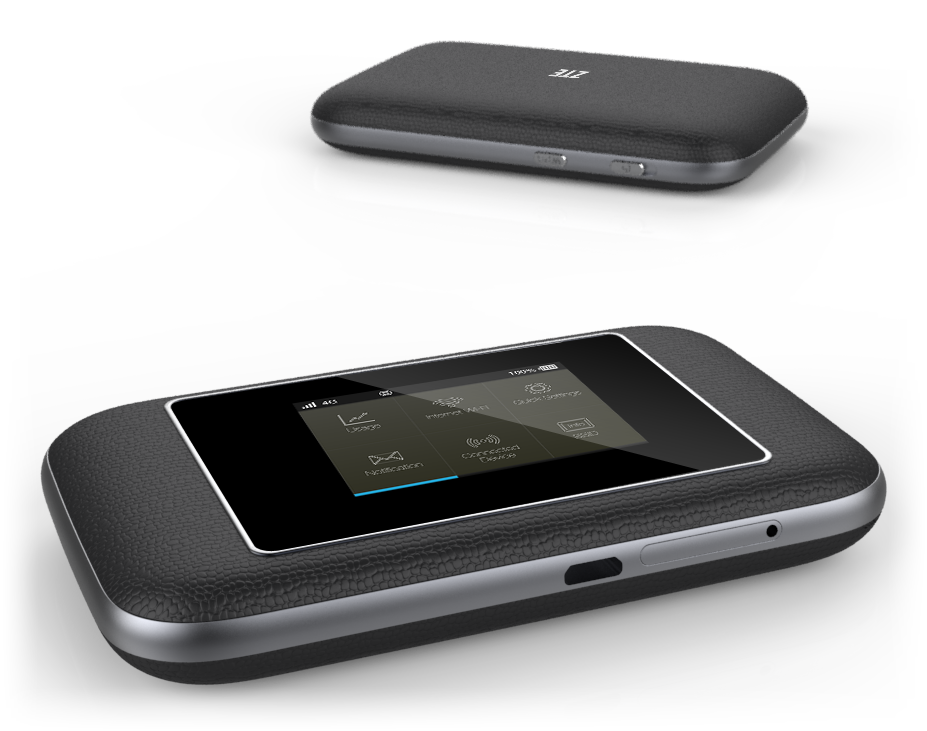We had introduced ZTE LTE Cat6 MiFi MF970 last year, actually, ZTE also presented another LTE Cat6 MiFi MF971V and it’s available for many network providers worldwide. Even though it’s already an old mobile WiFi hotspot, many people don’t know this ZTE 4G mobile hotspot and its specs & features. Today we will review the ZTE MF971V LTE mobile hotspot.
ZTE MF971V Appearance
The appearance of ZTE MF971V looks very similar to ZTE MF970 uFi, there is a small LED screen on the front. The ZTE logo is at the left side while the LTE word on the other side. On the top edge side, there is a WPS button with the power button. And there is a connector for external 4G Antenna. On the opposite side, there is also a connector for a 4G LTE antenna. The SIM card slot is available with the USB port. The back cover of the ZTE MF971V could not be removed, unlike the competitor Huawei E5786. But both the ZTE MF971V and Huawei E5786 batteries are built-in and non-removable.
ZTE MF971V Technical Specifications and Features
With LTE category 6 bandwidth technology (carrier aggregation), ZTE MF971V could achieve download speed up to 300mbps and upload speed up to 50mbps. As a WiFi Router, ZTE MF971V hotspot 4G could allows simultaneous connection via WiFi up to 10 devices or with a PC using a USB cable. This makes the ZTE MF971V ideal for use at home, taking with you on holidays, for business meetings and on a longer journey. In places with a weaker range, an external antenna can be connected to the device. ZTE MF971V WiFi Router is also distinguished by its small size and modern design, and the clear display informs about the current status of the battery, Wi-Fi networks, coverage of the cellular network and about received SMS messages. The built-in 2300 mAh battery provides up to 500 hours of standby time and up to 11 hours of operating mode. ZTE MF971V weighs approximately 100 g.
Here we list the details specifications of ZTE MF971V for general review:
- Support 4G Band: LTE FDD B1/2/3/4/5/7/8/17/12/20/28 TDD B38/40
- (FDD 2100/1900/1800/1700/850/2600/900/700/800Mhz TDD 2600/2300Mhz)
- Carrier Aggregation: 4G LTE band B3+B7 / B3+B3 / B20+B7 / B3+B20 / B7+B20 / B3+B5
- 3G Band: DC-HSPA+/HSPA+/HSPA/UMTS B1/B2/B5/B8
- 2G BAND: GSM/GPRS/ED GE
- WLAN: 802.11 b/g/n/ac, dual band 2.4GHz and 5GHz
- LTE Category 6 download up to 300Mbit/s, upload to 50Mbit/s
- DC-HSPA+DL (Download) up to 43.2Mbps, UL (Upload) u p to 5.76Mbps
Other Feature:
- 1 x SIM card slot – Micro SIM (12 x 15mm)
- 1 x micro USB connector for charging
- 1 x 1.44 TFT-LCD
- Power switch, a MENU switch, RESET switch
- Built-in LTE/UMTS/GSM and WLAN high gain antenna
- Battery: 2300 mAh (Max Work 11 hours, Max Standby 500hr)
- 2 X TS9 external antenna connection
- Maximum of 32 wireless users
- Operating: 0℃ to +35℃
- Dimension: 104 x 65 x 14.3 mm
- Weight: 101g (including the battery)
If you want to know more details about ZTE MF971 LTE-A Mobile WiFi hotspot, click here: https://www.4gltemall.com/zte-mf971v-lte-cat6-mobile-wifi-hotspot.html
